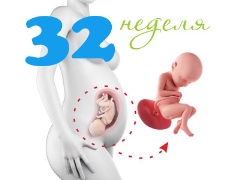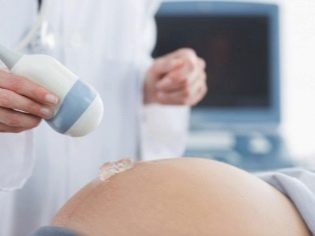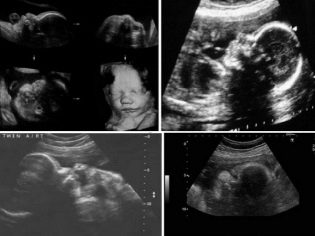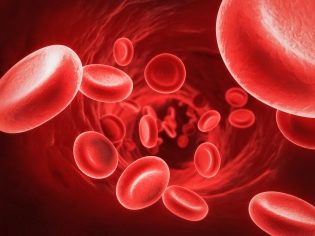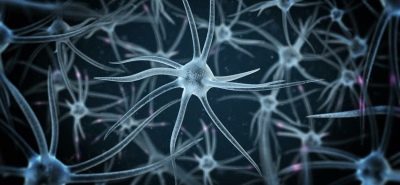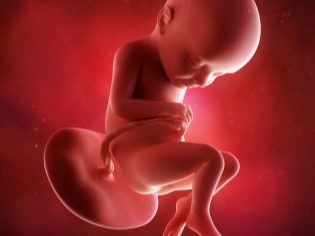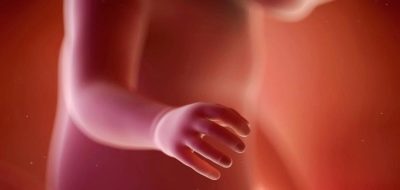Fetal development at 32 weeks gestation
The development of the baby in the third trimester has a number of distinctive features. This article will tell you in detail about the features of fetal development at week 32.
Anatomical features
Fetometric indicators, which are measured by an ultrasound specialist during the examination, are very important clinical markers. They give doctors information about how well the intrauterine development of the baby proceeds. Using a simple ultrasound test, obstetrician-gynecologists monitor the course of pregnancy and can identify various pathologies. One of these pathologies that fetometry may suggest is a delay in fetal development.
The main parameters that are evaluated in this study are the length and body weight of the baby. The doctor determines the size of these values using a special ultrasound machine. The more modern such a diagnostic device, the more accurate the result will be.
For each week of pregnancy, the norms of the studied parameters were developed. The normal values of the main clinical parameters that can be determined in the fetus at this time of its intrauterine life are presented in the table below.
Study criteria | Norm at 32 weeks gestation |
Growth | 39-42 cm |
Weight | 1800-2000 grams |
Biparietal size (BPR) | 76-90 mm |
Forearm Bone Length | 46-53 mm |
Bone length of shin | 53-60 mm |
Thigh length | 57-66 mm |
Shoulder length | 53-62 mm |
Abdominal circumference | 25.9-31.4 cm |
Head circumference | 28.4-32.5 cm |
Frontal-nuchal size | 95-114 mm |
It is important to remember that These parameters are average - each baby grows and develops individually. To interpret the results of fetometry must doctor. Only an experienced doctor will be able to distinguish the rate from the pathology. Self-conferred conclusion is not a diagnosis.
Multiple pregnancy has its own characteristics. In this case, several babies grow and develop at once in the mother's womb. It is clear that their size and weight will differ from the values characteristic of singleton pregnancy. For example, at week 32, twins weigh about 1.4-1.5 kg. As a rule, in this case, the weight and length of one child is somewhat greater than that of the other.
How is it developing?
Few weeks left before the birth of the baby. Crumbs still have very little time to prepare to be born. All the systems of the child's body at this time begin to work more intensively.
The main feature of this period is the revitalization of the lungs. Gradually, a special substance appears in them - surfactant. It lines the respiratory alveoli from the inside and is necessary so that the pulmonary vesicles do not “stick together” when breathing. Nature is designed so that without surfactant, our lungs can not fully work, and the implementation of normal breathing is impossible.
The baby begins to see changes in the bronchial tree. Every day it becomes more branchy due to the differentiation of the bronchi. Making swallowing movements and swallowing the amniotic fluid, the baby trains not only its digestion, but also the respiratory system.Every day his pectoral muscles work more and more intensively.
This lung structure ensures that the baby born at week 32 is already viable. After being born into the light, he can already take his first independent breath. This is possible due to the fact that the lungs are already able to do away with breathing.
The ability to live outside the womb during this period is also due to the fact that the fetus is actively working the heart. During the day it is able to pump liters of blood. The structure of the heart of the fetus is the same as in adults.
The active metabolism of the child contributes to the fact that his cardiovascular system works in a more intensive mode. Growth requires nutrients and oxygen, which are delivered through the blood vessels. "Pumps" the blood through the arteries of the heart. Doctors call this its function pumping.
The active growth of the child is accompanied by an increase in the pumping function of the heart. This is manifested in the fact that the baby's heart rate is slightly higher than that of an adult. The rates of heart rate, determined on this gestational age, are presented in the table below.
Heart rate | Norm at 32 weeks gestation |
Heart rate | 130-160 beats per minute |
Counting heart rate can be done in different ways. The baby is already so large that you can listen to his heartbeat with the help of an obstetric stethoscope. With the help of this ancient device, the doctor rather accurately determines how often a small heart beats in the fetus.
A distinctive feature of this period is also the intensive development of the nervous system. Most organs have already been formed. However, their development is happening every day.
Very specific changes occur in the brain. So, it increases the number of convolutions. The furrows that give the cerebral cortex a characteristic uneven look are becoming more and more profound every day. Such changes in the structure of brain tissue contribute to the fact that the fetus's behavior changes.
The child has reflexes, the number of which increases every day. Reflex activity for the baby is needed. Without the presence of basic reflexes, the baby will not be able to adapt to the new environment, which awaits him very soon - in a few weeks left before the birth.
The active development of the central nervous system and analyzers contribute to the fact that the baby has its own sensations. It is important to note that the fetus can feel quite a lot at 32 weeks. For example, he is able to define different tastes. He does it while swallowing the amniotic fluid.
The fluid, getting on the baby's tongue, causes irritation of special receptor endings - the papillae. With their help, quite simply the fruit can distinguish between salty, sweet and even bitter taste.
Also, the baby is able to respond to bright light. The eyes of the baby outside covered for centuries, but he can open and close them. The child has a circadian rhythm, that is, is able to stay awake during the day and sleep at night. If the baby's eyes are open, he can perceive bright rays that fall on his face. If the light is too strong, the baby will try to turn away from it, and in some cases even change its position in the womb.
The number of receptors on the skin of a child increases. The kid is already able to perceive pain. In general, with each subsequent day of pregnancy, fetal susceptibility to various external stimuli will increase. This reaction is considered quite normal and suggests that the child's body is ready to adapt to new environmental conditions.
Another sensation that the fetus is able to experience at this time is the perception of various sounds. Scientists believe that at 32 weeks the baby perceives lower sounds better. That is why the baby listens with pleasure to the voice of his dad when he “talks” with him.
Movements
Motor activity of the fetus gradually begins to change. Of course, the baby is still kicking and pushing, but not as often as before. It should be noted that such changes occur due to the fact that the baby becomes quite large - every day it becomes pregnant it is closely located in the uterus.
Despite these features, the expectant mother still feels the baby in her stomach quite strongly. Usually, the baby is very active during the daytime, at night the child calms down and can even sleep. Scientists believe that on average a child sleeps about 16-19 hours at this time.
Excessive physical activity of the baby can lead to various pathologies. One of them is entwined with the umbilical cord. This condition is determined not only clinically, but also during ultrasound. The risk of intrauterine damage in this condition is quite high.
For the timely diagnosis of various pathologies that may occur at this stage of pregnancy, the expectant mother should carefully monitor their state of health. If the amniotic fluid began to leak, or the stomach began to hurt badly, then in that case you should immediately see your obstetrician-gynecologist.
What does it look like?
By the 32nd week of pregnancy, the fetus already looks like a real baby. He already defines the main parts of the face. The forehead and nose have clear contours and do not seem as flat as before. The baby has formed small ears that are located on the sides of the face.
The beauty of the baby face give cheeks. By this time of pregnancy, they are already becoming quite plump. This fatty cheeks attached fatty tissue, which accumulates under the skin.
The accumulation of fat in the children's body contributes to the change in body parameters. So, the baby appears dimples and folds, which usually lead to all the emotion. Also, the elbow and popliteal fossae are clearly visible in the fetus.
The kid's limb joints are quite mobile. Muscles are already quite elastic, and the bones are strong. Such structural features of the musculoskeletal system contribute to the fact that the baby flexes and extends the fingers well, can move the arms and legs.
On the body of the baby, there is still a special downy hair coat - lanugo. However, with each subsequent day of pregnancy, the number of small hairs on the body of the fetus will decrease. The only exception is the head: there is already quite a lot of hair on it.
The skin of the baby is still covered with wrinkles. This is because the fetus is constantly in the aquatic environment. After his birth, the skin smoothes and wrinkles disappear. The color of the skin of the fetus is not as red as before. At week 32, baby's skin has a light pink tint.
If the baby is active, then he performs some actions. So, he can touch the walls of the uterus with his hands, bend and unbend his fingers. After ingestion of amniotic fluid, the fetus hiccups, which is quite normal for its natural development.
How is the fetus in the womb?
On how the fetus lies in the uterus, further depends on the choice of obstetric aid. If the baby is located in the head of presentation, in this case, childbirth is carried out naturally and usually proceed without the development of serious complications.
It is less favorable if the fetus is located across the longitudinal axis of the uterus. Doctors call this position transverse. In this case, an independent birth can be dangerous development of birth injuries. As a rule, the best option for obstetrics is a cesarean section.
Pelvic presentation of the fetus is also a rather unfavorable option. In this case, the pelvic end of the body of the baby is the first towards the birth canal. In such a situation, at birth, the risk of possible injury and damage increases many times. The best way to give birth in such a situation is a cesarean section.
One of the options for pelvic presentation is the buttock.In this case, the baby is at the entrance to the small pelvis with its buttocks. With such a “reverse” position, the child’s normal birth is disrupted. Breech presentation is also dangerous in the development of dangerous birth injuries. In order to warn them, doctors also have to resort to cesarean section.
For information on how the fetus develops at 32 weeks of gestation, see the following video.
